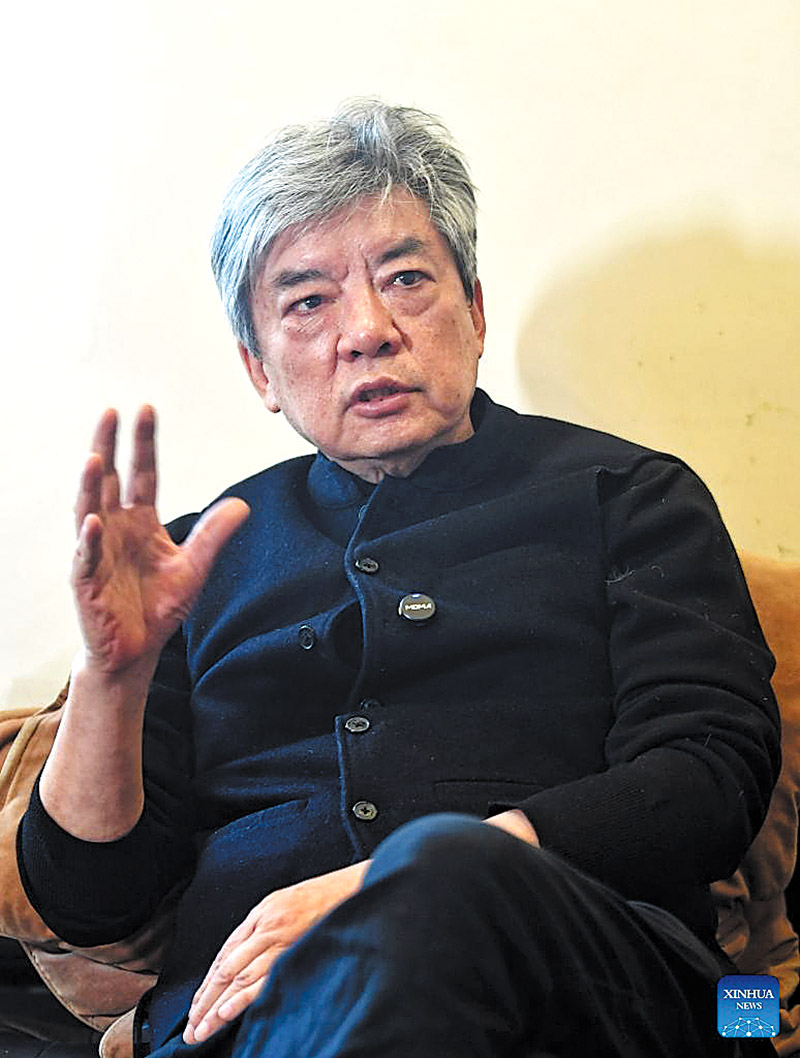
CHENGDU — When asked about his favorite architectural form, Liu Jiakun, the newly crowned Pritzker Architecture Prize laureate, did not mention soaring skyscrapers or grand monuments, but said, "Wells".
"In a well, time loops and parallel universes exist. Wherever you are, you are both inside and outside yourself. If the stage is dark, you cultivate your own light and if the sky isn't vast, you dig deep," he tells Xinhua in an interview in Chengdu, Sichuan province, where he was born.
For over four decades, Liu has remained rooted in his homeland, proving that a deeply local practice can grow into something towering and universal.
READ MORE: Pritzker winner celebrates ordinary people's lives
Earlier in March, the Pritzker Architecture Prize committee announced Liu as its 54th laureate.
"Liu creates public areas in populated cities where the luxury of space is largely absent, forging a positive relationship between density and open space. By multiplying typologies within one project, he innovates the role of civic spaces to support the breadth of requisites for a diverse society," the committee says.
Liu is the second Chinese citizen to receive this prize. He spent most of his life in Chengdu crafting buildings that respond to the land, the people and the culture that raised him.
One of his most emblematic works, West Village, is a five-story urban complex. Designed like a hotpot, where various ingredients come together in a bubbling and flavorful mix, it blurs the boundaries between public and private, formal and informal. In this complex, elderly men walk with their birds, influencers pose for photos, and children chase soccer balls.
In 2016, a model of West Village was displayed at the Venice Biennale. Today, it stands as a defining reason for Liu's Pritzker win. "Liu Jiakun takes present realities and handles them to the point of offering sometimes a whole new scenario of daily life," the jury notes.
In the eyes of his friends, Liu is as much a man of letters as he is a man of bricks. He reads voraciously, drawing inspiration from literature, philosophy and history. These influences manifest in his work: not just in form, but in meaning.
In 2008, after a devastating earthquake hit Wenchuan in Sichuan, Liu rushed to the disaster zone to volunteer. "As a Sichuan resident, I felt the pain. As an architect, I had to do something I knew how to do."
Liu repurposed rubble from the quake into bricks, which he used to rebuild homes and construct a memorial site. The bricks at the memorial site form courtyards that bear silent witness to loss and resilience. "They are more than materials. They carry memories," Liu explains.
One of his smallest yet most poignant works is a memorial hall dedicated to a 15-year-old girl who perished in the quake. A lover of literature, she dreamed of becoming a writer. With her parents' consent, Liu designed a delicate, pink-walled sanctuary nestled in a grove with a circular skylight casting soft, shifting light.
"It wasn't a commission," Liu says. "It was something I had to do because I was there and I am an architect."
Liu's career path was far from predetermined. Before college, he had never even heard of architecture. When filling out university applications, he listed majors like warehouse management and leather processing, simply seeking a path to securing a stable job.
ALSO READ: Nature in urban setting
Notably, throughout the decade after graduating, Liu abandoned architecture almost entirely, pouring his energy into writing.
But, in 1993, a solo exhibition by a former classmate in Shanghai changed everything. "I realized architecture could be captivating. Architects could have exhibitions. China's architectural era was coming."
His foray into architecture coincided with China's construction industry boom when architects finally had space to innovate. Yet, while many chase monumental and high-profile projects, Liu opts for less glamorous quests.
To Liu, architecture is akin to literature and painting, disciplines of lifelong pursuit. "Both are endless labors, but the beauty is that they push you to keep growing," he says.
Each project, he adds, is a love letter to his homeland.


